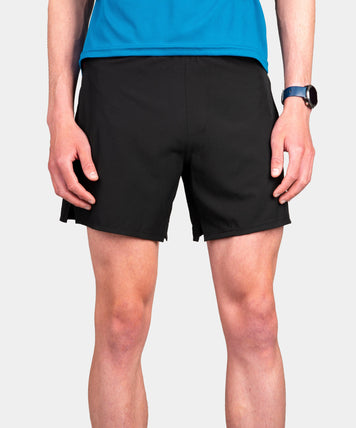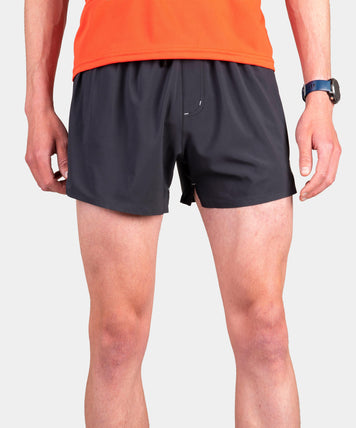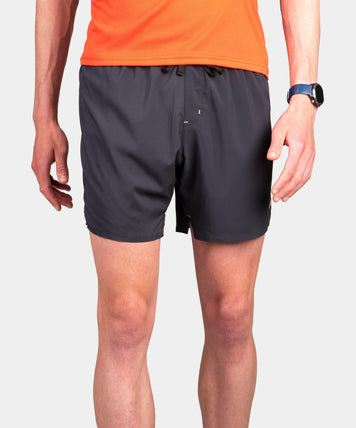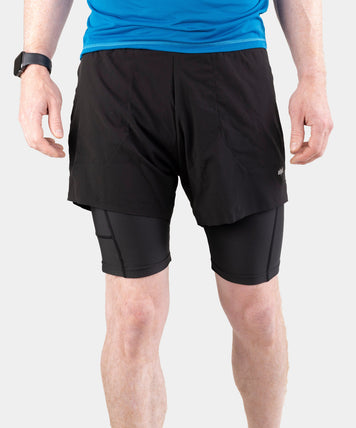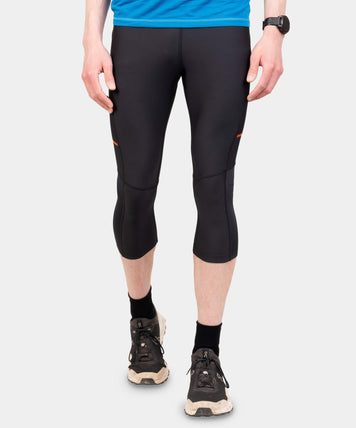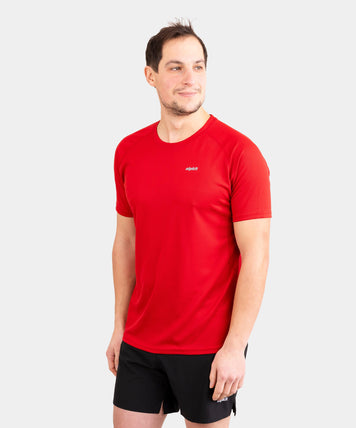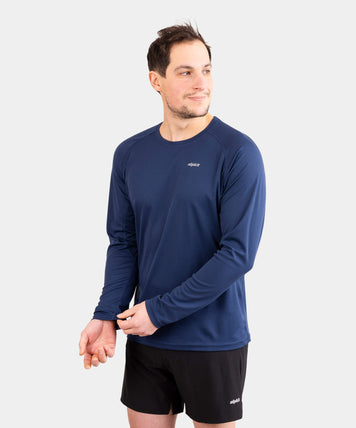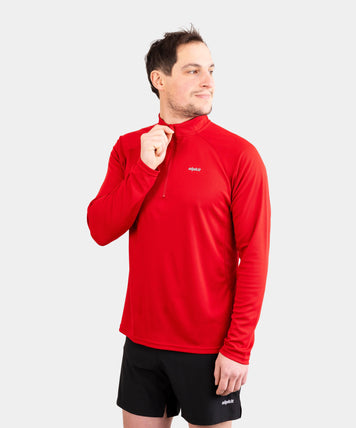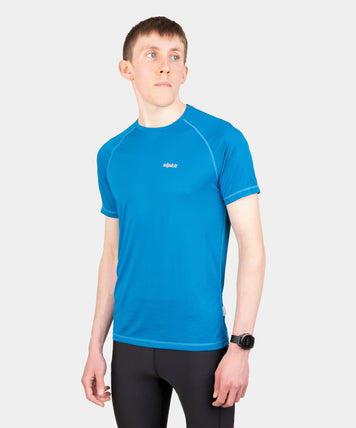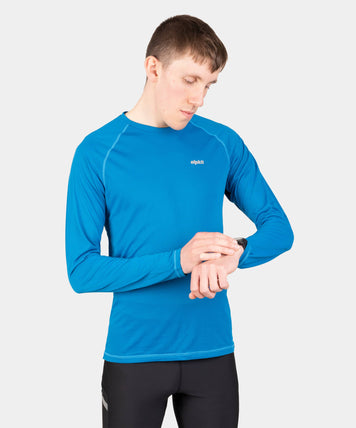
There's always a sense of satisfaction from forcing yourself outside into the dark, the damp and the cold. But sometimes that's all there is!
Winter can be a long, hard slog for runners – it’s not all bright, sunny mornings with a crisp frost underfoot. But getting through to spring without a period of running hibernation is easier than it seems. All you need is the right kit, know-how and a little bit of extra effort.
- What to wear for winter running
- Lighting and emergency equipment
- Nutrition - keep fuelled and hydrated
- Do your post-run prep
- How to stay motivated for winter running
- Winter running kit list

What To Wear For Winter Running
Applying the classic outdoor layering system to your winter running clothing allows you to adapt to often unpredictable and changeable weather. Ultimately, what you wear will depend on the conditions, the intensity of your run, and how you personally respond to the cold. It’s not always as simple as just opting for long sleeves and switching from shorts to leggings!
Here are some simple tips which can make running in winter more comfortable. At the end of this article, we have some suggested products suited for the winter months which work well together.
Tip #1 – Layer, layer, layer… layer
Wearing multiple thin layers makes it much easier to control your temperature on the move than one warm jacket. Getting too hot in winter might not sound like a bad thing, but getting really sweaty can be dangerous if you cool down too quickly. Wearing multiple thin layers is also warmer as each layer you wear traps a thin layer of insulating air next to your body.
Go deeper with our article on Dressing for the Winter Trail Running Season.
Tip #2 – Breathability is king
You’re gonna get sweaty, no matter how much you fine-tune your layers. It’s even more important in winter to wear fast-drying, breathable layers throughout, from your base layer and midlayer right through to your windproof or waterproof. Wearing breathable layers allows moisture from your body to escape which stops you getting clammy and cold.
Magic Merino Wool
Merino wool is naturally breathable which makes Merino base layers perfect for running in winter. Merino wool works by absorbing moisture from your body into the structure of its fibres before releasing it to the outside. This allows it to absorb up to 35% of its weight in water before it feels damp to the touch, which stops you feeling cold and clammy.
The Merino wool fibres also react to your body temperature and surrounding environment, releasing more moisture to evaporate when you overheat and releasing less as you cool. This keeps you a comfortable temperature even as the conditions or your effort levels change.



Tip #3 – Be bold, start cold
It’s tempting to head out wrapped up in all your warm layers – especially first thing in the morning when it’s cold and dark outside. But you’ll soon warm up, particularly on harder or faster runs, and may regret wearing all those layers if you haven’t got a running pack or waist belt to stash them in.
Tip #4 – Make micro-adjustments
It’s amazing how much difference a hat, gloves, or neck warmer can make. These extra bits of clothing can easily be taken on and off on the move, and stashed in a pocket when you warm up.
Tip #5 – Get your lugs out
Mud. Miles of mud. As far as the eyes can see. Dry, hardpacked trails start to feel like a distant dream the deeper we get into winter. Trail running shoes with deep lugs – pointy tread patterns a bit like the studs on football boots – provide much better grip on wet and slippery off-road surfaces. And widely spaced lugs tend to clog up less in sticky mud.
Alpkiteer and Lake District local, Ian Palmer, is no stranger to running across snow covered fells. Here’s how Ian layers up…

Don't Get Caught Out On Long Runs
It’s surprisingly easy to get into trouble on long winter runs, especially if the weather turns or you roll an ankle in the middle of some remote moorland. Setting off prepared for every eventuality (within reason) gives you the reassurance that you can get yourself out of sticky situations.
Keep your running vest or a small dry bag packed with a few essentials so you can fly out the door without spending half your morning packing. The Fell Running Association minimum race kit list is a good place to start. But for longer, more remote runs you may want to consider packing a stripped-back version of what you’d carry in a hillwalking daypack, including a very basic first aid kit.
Head torch – A good running head torch allows you to keep your feet (and incisors!) when the light fails. It can also be used to signal for help in an emergency.
Spare warm layer – Always pack one more layer than you think you’ll need, whether it’s a lightweight insulated jacket or a waterproof jacket and trousers to keep the wind off.
Map and compass – The lithium-ion batteries in your phone or GPS can plummet without warning in cold weather. Luckily, a map and compass will never run out of battery. You could print/photocopy the section of map you need or take a mini Harvey Ultramap to save weight.
Charged phone – Essential if you need to call for help in an emergency. A bit of spare cash for emergency transport/chocolate bars is always useful too.
Survival bag – That extra 105g is worth carrying if you ask us. Hopefully you’ll never have to use it!



Keep Fuelled And Hydrated
Staying warm when winter running is about more than just packing on the layers. Make sure you stay hydrated and eat enough food to keep you going. Your body burns through the calories to keep you warm and your legs moving. If you run out of fuel, your core body temperature can drop. Once that goes it’s harder to keep everything else warm.
The type of snack often depends on the run – and the snacker (or ‘snackeur’) in question. A banana back at the car is usually enough for shorter runs (up to 10km). For longer runs, snacks like rice cakes, flapjacks and trail mix provide a high number of calories. For really long runs, you might need to bring out the big guns: jam and peanut butter wraps and cold pizza! Snacks like these help you to avoid a sugar crash and will keep you going for longer.
It’s surprisingly easy to get dehydrated in winter as cold weather reduces your thirst response. Adding some squash or electrolyte tablets to your water bottles can make it easier to drink. We’d always recommend carrying emergency food too, just in case a serious bonk strikes when you’ve run out of snacks!

Do Your Post-Run Prep
Nothing keeps you going at the end of a long, cold run better than the knowledge that you’ll soon be nice and warm with a full belly.
Getting dry
If you’re driving to the start of a run, leave a towel and some dry clothes in your car to change into afterwards. Just pulling off your sweaty base layer and pulling on a soft cotton tee is enough to stop you getting cold and shivery. You might want to bring a changing robe too if it’s a busy car park!
Getting fed
Recovery shakes are a fast and easy way to replace lost energy and help your body to repair after a hard effort. But a flask of tea/coffee/hot chocolate and a hot meal will really give you something to look forward to at the end of your run. Dehydrated meals like Firepot food pouches are useful if you’re a long way from civilization. If you can wait till you get home, beans on toast provides the perfect balance of carbohydrates and protein for recovery and only takes a couple of minutes to make.
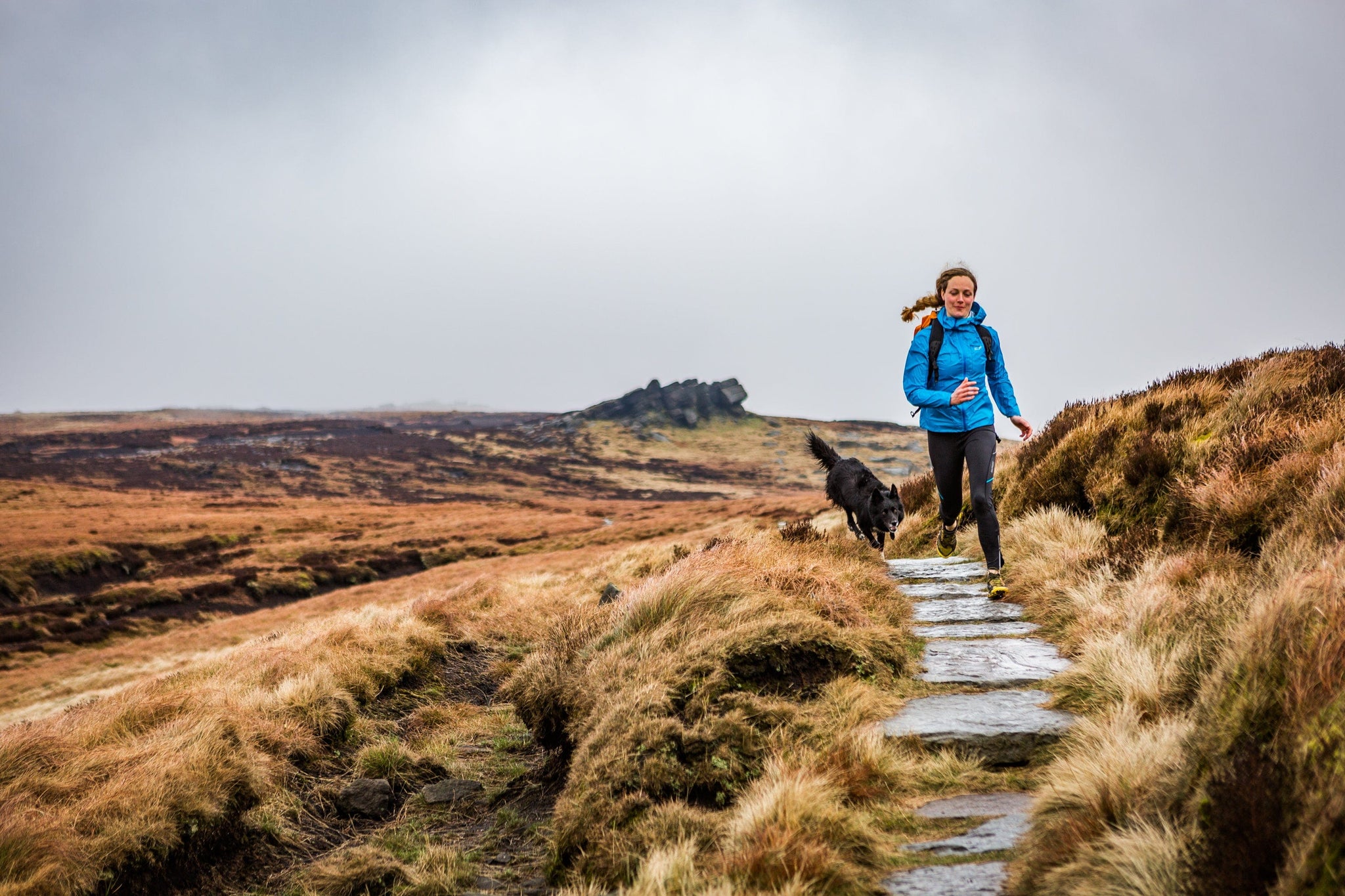
How To Stay Motivated For Running Through Winter
Sometimes the mental struggle to get out during winter can be tougher than the physical one. Our houses are cosy and warm, the weather's often worse and the dark mornings and evenings feel far from inviting. How on earth do you keep going when its so dark, cold and damp outside?
Warm up inside – Be bold, start cold still applies but warming up inside definitely reduces the shock of stepping outside into the cold air.
Plan new routes – It’s easy to get bored of the same old loops. Exploring new areas fires up your sense of adventure and stops your running from feeling routine.
Run with a friend – It’s harder to back out when you’ve already committed to meeting someone. And when it’s truly minging outside, at least you’ve got someone to laugh about it with.
Set yourself a goal – Having something to work towards always helps when you’re trying to drag yourself out of the house. It doesn’t matter what your goal is: beating your 5K time, running a half marathon or making it to the top of a notoriously steep climb without stopping. Setting smaller short-term goals along the way gives you a little boost and stops you getting too deflated.
Sign up to an event – Nothing focuses the mind more than the fear of turning up to a race or event completely unprepared. Plus, ticking off the steps on a training plan can be a satisfying way of keeping up your motivation.

Winter Running Kit List
No winter running kit list will fit everyone – we’ve seen gnarly fell runners out on the moors in 3 inch shorts and their club vest, even in the depths of winter! But we think this should cover most people for a wide range of different winter conditions.
Clothing
- Warm long-sleeved base layer (Kepler Zip Top / Laika)
- Full-length wicking leggings (Koulin Trail Tights)
- Windproof or wind-resistant jacket/gilet (Arro / Morphosis)
- Breathable fleece midlayer (Akita / Griffon)
- Lightweight waterproof jacket (Gravitas / Pulsar)
- Wicking underwear (Kepler Boxers / Kepler Briefs)
- Merino wool socks (Momentum)
- Lightweight hat (Kepler Liner Hat)
- Gloves (Kepler Liner Gloves / Specta)
- Neck warmer (Draught Excluder)
For long runs
Men's Trail Run Clothing







